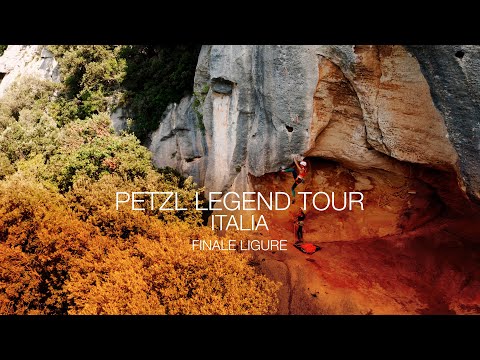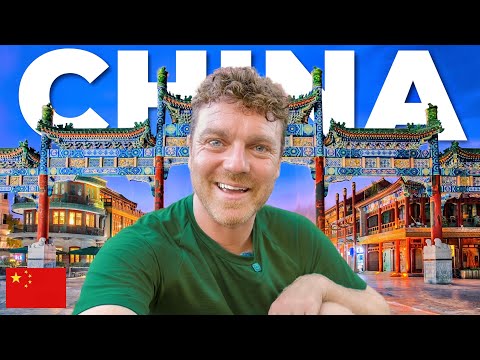Petzl Legend Tour Italia - Finale Ligure

It seems like sport climbing in Italy originated from the sea. We are in Finale Ligure, at the beginning of the 80s when a new grade was set, the 7a. Here begins our journey following the path of the pioneers who managed to climb walls that until then seemed reachable but still too flat to be climbed. We will hear about this vertical revolution from Alessandro Grillo one of the fathers of these radical changes in Finale Grillo was the first to climb the cliffs of Capo Noli when he discovered with Patrick Berhault a sleek slab overlooking the sea This is how “Dancing Dalle” was born the first 7a in Finale Ligure a true vertical dance We reached this “Dalle” and Patrick looked at it from every angle but there was nothing Back then there was absolutely nothing He told me “I would like to try it!” So we did I fixed a rope and rappelled him down Shortly Patrick came back up and I was shocked because it was unexpected - There was nothing, the wall was flat! - Absolutely nothing! He told me he wanted to climb it from the bottom but what about protection? At that moment he told me a sentence we would later repeat on multiple occasions: “go ahead and bolt it, I’ll do the rest!” So I fixed 4 bolts over 15 meters he arrived, and out of nowhere he climbed from the bottom to the top to everyone’s surprise because it was a degree of difficulty that just didn’t exist It was the first 7a of Liguria We were very close I have a theory: nothing happens for no reason When you meet someone it’s because it was meant to be You feel a connection to someone when there is something that impresses you and generates some sort of empathy. With Patrick we had this strong bond and throughout our lives, if he had any problem he would tell me “I’m coming over” and then we would stay here, without going climbing we would go for walks or runs around here and he would tell me everything. I was like an older brother to him - Have you ever been to this sector? - No! It's the first time I come here in Perti The first sport climbing sector, “Pancia dell'Elefante” was set in Rocca di Perti, in 1983 Here, in the “Piotti” sector the most iconic route of that time was set: “I Nuovi Guerrieri”, a 7b set by Giovannino Giova Massari and Andrea Gallo This route is the symbol of a challenge that pushes climbers to keep finding smaller holds When bolts became popular at the beginning of the 80s it was like a small revolution What seemed to be the end of an era in the 80s was an actual change for us a real climbing revolution Where did the idea of “Nuovi Guerrieri” come from and who were “the new warriors” of that time? “Nuovi Guerrieri” came from an idea we had Andrea Gallo and I because after many travels, especially in France we had the opportunity to set a route here inspired by what we had seen abroad I remember that after a trip to Verdon where we saw Jerry Moffatt climb “Papi On Sight” we realized how you didn’t have to climb a route only once but you could try many attempts We came back to Finale, bolted this route and after many attempts, we both freed the route him first and me right after This route progresses over 25 meters on a grey rock pillar, typical of this area It starts with a very hard section of small holes then it continues with a slab in the typical Finalese style It's beautiful up here! - Come on Wafaa, let's go! - I'm coming! The first routes were set in Rocca di Corno But it's Monte Cucco where the Finalese climbing style was born Monte Cucco is the origin of all climbing techniques because its vertical progressions inspire lightness, strength, but most importantly harmony We took off and started to set “Grillomania” For him, it was a piece of cake Halfway through the slab he stopped to look down and told me “there is nothing here!” and that was true Back then the hardest grades would range between 6a and 6b and you would use ladders on the hardest sections There was nothing but he told me “go ahead and bolt it, I’ll do the rest!” When I finished setting it I called him and he climbed it to the top In the middle of this slab, there is a pitch: “Aspettndo il Sole” it has always been his favorite To him, it was a unique and beautiful climbing style - There are pitches here like “Occhi Dolci per Frank Zappa” which represent the apotheosis of the Finalese vertical dance - In my opinion, those are the routes that define climbing in Finale despite the fact that I was the one to bolt them That doesn't matter Routes like "Aspettando il Sole" - He also bolted "Moon Runner" as well as "Occhi Dolci" - "Aspettando il Sole" back in the day was a challenging route nowadays I realize it might no be so...
- It's still a great route! - But it's a slab, a technical route you have to look where you are placing your hands - Yes, you have to be precise - He's always been a revolutionary route setter in a good way! When he bolted "Occhi Dolci per Frank Zappa", "Moonrunner", and all the other routes on that wall the most difficult grade of free climbing routes was 6b+, maybe some 6c like "Serenella" which was named after a girl - You were the one dating Serena, not me! - Well, you introduced us! - You were the one naming the route after her - Anyway, grades were relatively low, 6b+, 6c Those were the most difficult even for strong climbers who came from elsewhere By that time he had already set both “Occhi Dolci” and “Moon Runner” and for us, it was like a dream to imagine we could climb them And we climbed them all! - Of all the routes you have set is there any of them you are particularly fond of? - "Alba di Giada", no doubt but you talk now, I can't anymore - It was the name of one of Martino's girlfriends her name was Giada He named that route after her The location is amazing it’s up high, the colors are spectacular the route is a little exposed And it was named after this girl In the mid-80s, in Monte Cucco, Grillo found a magical spot: a large horizontal overhang extending 70 meters above the ground That's where Patrick Berhault will perform his climbing dance and where the route Coralie was set He wanted to do something for his daughter Coralie, my godchild To set a route for someone was in common use You set a route, and call it "Coralie" I had a spark of an idea one of those that come suddenly to you “Why don’t we try to climb it during nighttime in special conditions?” We talked to some people from the area and they agreed to help us We cleared the area at the bottom of “Coralie” drove to Piacenza to get a large flashlight and climbed it at night Before doing so Nico Ivaldo, and I bolted the overhang using regular bolts fixing some ropes on tiny natural anchors removing some grass - Back then that overhang must have looked very difficult almost impossible to climb! - Well, it is still fairly hard! Maybe strong climbers would find it easy but 7a or 7b is still a pretty difficult grade in those conditions - It was a new type of climbing a new kind of progression on different inclinations that was what made a difference - Yes, absolutely I have to say that Berhault with his own climbing style liked to literally represent movements He was the founder of the “Dance Escalade” he was the one who started it Nowadays most climbers climb that way but to conceive the act of climbing as a dance it was extraordinary As a matter of facts he danced all the way up that overhang it was beautiful, really Everyone was amazed Try not to tangle the rope Come on, you've got it! Good job! Come on! You've got it, Fede! Good job! - It's so cool! - Right? The sector “Alveare”, on Monte Sordo with its unique configuration gifts us with the most visionary route of the 80s we are talking about “Viaggio Nel Futuro” "Viaggio nel Futuro" was bolted in 1985 by Luca Biondi and Martino Lang Later Andrea Gallo will free the most pursued crux of the time: A brutal horizontal section eased only by the discovery of a toe and heel-hook - Hello! How are you? - Hi, good and you? - Good! - 36 years, hu? - 37! - Take a look at the writings over here! - I'm gonna cry now We set “Viaggio Nel Futuro” because we were fed up with coming here to the "Alverare" to look at Andrea attempting “Hyaena” We had climbed all the other routes so as boredom crept on us we looked up and thought “How about up there?” Everyone was telling us not to try but we did anyway, we had time to spare Andrea spent his time climbing “Iena” while we were setting routes over here To bolt it was challenging back then we did it manually using very heavy tools and the location here is rough So this guy over here, being lighter would sit on my shoulders and we would fix the last ones we could not reach After several attempts it seemed to us that the route could be climbed. Even we could not believe it it was something completely new! - A completely new style - Absolutely! It was different a much more powerful, athletic, reactive, and fast style of climbing. Back then we used to climb at a snail’s pace! Always careful But that completely changed - It was a big change! - Yes! The first impression of Finale is strikingly impressive you can really feel the climbing culture everywhere As we walk on the stone streets that twist and turn through the town we think about the endless number of climbers who have come here and walked all the way to the main square, and the "Bar Centrale" Over here it is easy to lose yourself listening to the tales of those who used to climb when we were not even born yet Tales made up of words, eyes that have seen a lot, and timeless dreams. Suddenly we feel like we can see them, wearing their old school leggings and Mariarcher shoes… How was sport climbing back then in the 80s, here in Finale? - First of all, you have to imagine that all of these routes and pitches did not exist, the rock was bare. When we got here with Andrea (Gallo), there was nothing When we reached “Silenzio” there was only one route, “Siddharta” As I entered “Grotta dell’Edera" there were no routes and that made everything much more exciting there was a lot to do, the rock was untouched, always beautiful, always exciting Bolts were already largely in use so it was only a matter of setting the routes.
It was a great time to explore there were many new things to try and we were not alone there were many groups of route setters It was a continuous exchange: we would set our own pitches and then sometimes go to check the others out… there was this legendary book at the Bar Centrale where you could find all the routes noted. There was always something new to try It was an opportunity to share techniques and styles, Those were truly glorious years. - Three adjectives to describe sport climbing in Finale Ligure, in the 80s - I would say, heroic becuase it was let's say heroic for what concerned the types protection as there had been a long research to understand how to climb safely on this type of rock Not to mention it was also "espacée" bolted as they called it in France following alpinism's path The next adjective, I'd say collective because it was the outcome of our little tribe which gathered several insights in this bubble we were living in sons of lawyers, magistrates, metalworkers we felt united Each of us brought his contribution to sport climbing which actually came to be "sport climbing" later in the next years The third adjective would be personal collective, but also personal because each member of our tribe shared a little bit of himself. In Finale Ligure there’s no way you cannot be struck by the beauty of “Bric Pianarella”, the highest wall of the area with long pitches and a breathtaking landscape.
This is where a new climbing technique was born as Grillo tells us. It’s a climbing revolution: flared trousers, homemade harnesses, tennis shoes. This is how were set the iconic routes around “Bric Pianarella” such as “Grimonett”. Vittorio Simonetti and I came up with a wonderful name, “Grimonett” which stands for “Grillo” and “Simonetti”. Many people believe it’s French, an exotic name. We could say that back then the Vaccari brothers and Gianni Calcagno, a great alpinist, were dominating the scene.
The Vaccari brothers named their route after their last name, “La Via Dei Vaccari” The Calcagni twins called theirs “La Via Dei Calcagni”… We could not let this set us back it was a matter of pride. We decided to set our own route. But where could we set it, since the rock was all so crumbly? We walked around, taking a look at the walls of the area and we studied their configuration. I found a spot and we finally set this route reaching a very crumbly and chalky section It was all dirt and sand We gathered our forces and Simonetti volunteered to attempt the crux, even if he was heavier he was good at climbing on crumbly rock. He said he’d climb it, and so he did.
There has been a lot of stress and tension after that section We secured ourselves on small bolts or natural anchors If one came off, you could fall all the way down He told me “Enough, you go ahead” So I continued to the top I will never forget Vittorio's worn out eyes as he threw away the few bolts we had left And that was it In 1977, the Calcagno brothers set one of the most beautiful routes: “Catarifrangente” known for its exposed traverse which allowed to go past the most eroded sections. The first climbing pitches in Finale were set on the walls of Rocca di Corno Where Patrick Berhault’s vision met the dreams of the Vaccari brothers and many other pioneers like Roberto Titomanlio, Gianni Calcagno, Vittorio Simonetti all born and raised around here. Just like us today, those climbers were dazzled by the wall’s silhouette its diverse rock, and the unique colors that paint the wall as the sun goes down. A view worth all the struggles We are tired, but happy.
We smile thinking about how little the grade system matters if compared to the history and the beauty of the pitches we climbed. This is the ‘vertical soul’ we were looking for and will keep on searching in the eyes and the words of those who believed in this passion enough to make it the essence of their lives. Who are the “new warriors” today, how do they experience sport climbing now? We will always be the new warriors, now we might be older, but still warriors.
Thanks to that spark and that adventure that lasted over 10 years for me I had the opportunity to truly experience climbing. Those years have shaped me and my everyday life, in the way I cope with challenges and the way I live. It’s a light that will never cease to spark as long as I’ll have the energy to carry on. How did climbing change you? Is it still part of your life? It changed my life in a way that it influenced some of my decisions. Look at me, I come from Genova but I built this house over here and my parents moved here as well.
The reason why I built this house was to be close to this place. - Is it still exciting to come back to this ledge? - Yes, very much because I miss it and now, well what can I say I am 56 years old and stiff as a board. I miss it terribly As the last rays of sunshine touch the sea we too would like to dive into the water of the bay of Finale Ligure.
You can’t describe a journey before living it. What you feel and the people you meet will help you find the words. Who knows where the sea will bring us next. We will follow its waves and discover a new chapter of sport climbing in Italy.
2020-12-29 07:20


